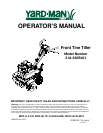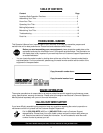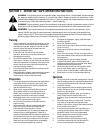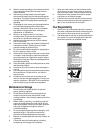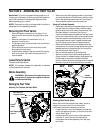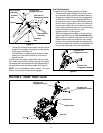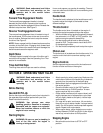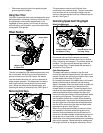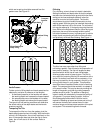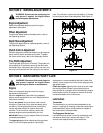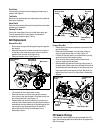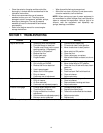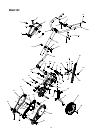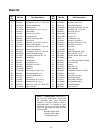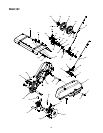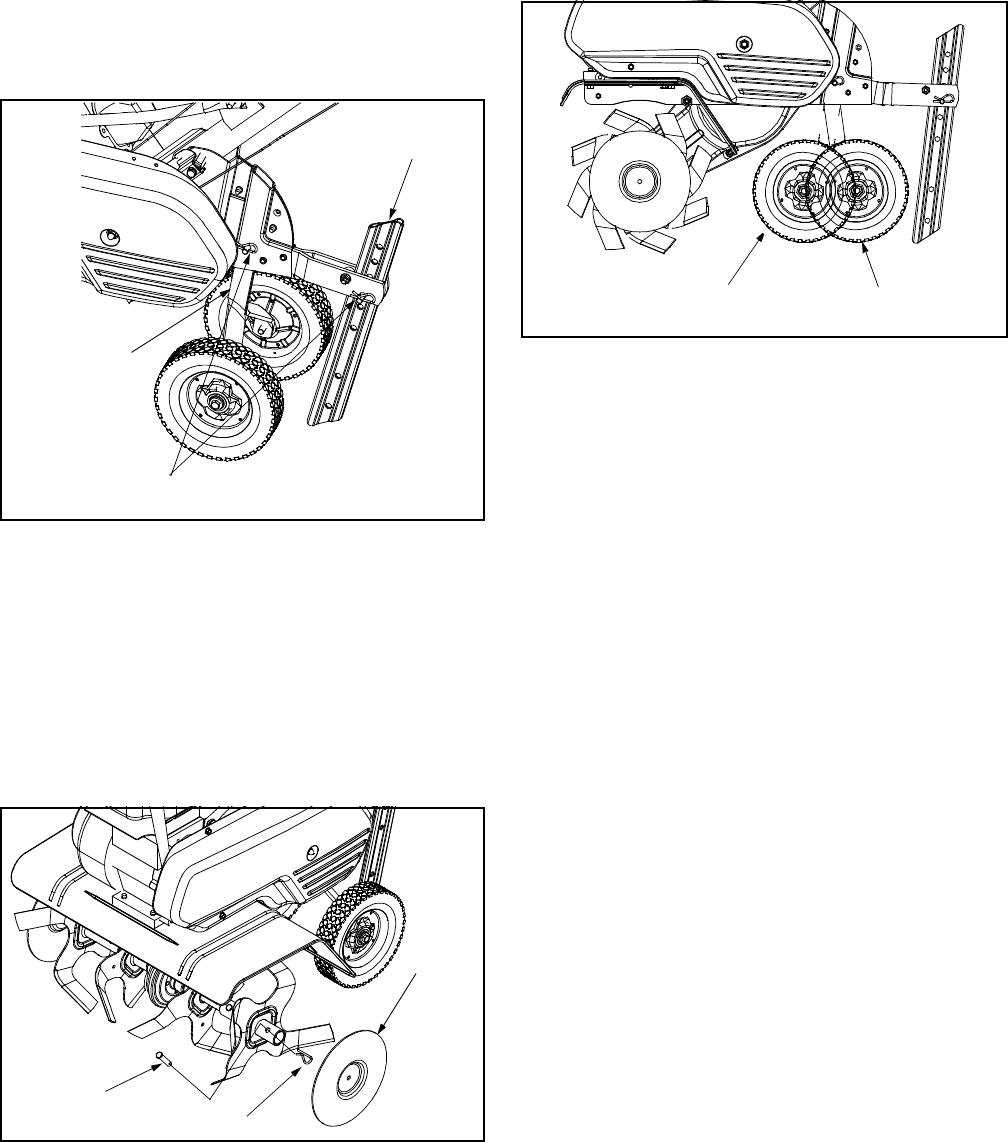
8
• Disconnect spark plug wire from spark plug and
ground against the engine.
Using Your Tiller
Your tiller is a precision built machine designed for seed
bed preparation, cultivating, furrowing, and mulching. It
is engineered to minimize the hardest work in the
vegetable or flower garden, to till the soil for planning
and cultivating, and to perform many other useful labor
saving tasks in the garden.
Wheel Position
Figure 6
The tiller is shipped with the wheels adjusted such that
the unit sits level. While tilling, as the tines enter the
ground and the front of the tiller lowers, the wheels
must be raised to level the unit, which is essential for
proper engine operation. This adjustment is made by
removing the clevis pin and hairpin clip from wheel
yoke, raising the wheels to the desired height, and
replacing the clevis pin and hairpin clip. See Figure 6.
Removing End Caps
Figure 7
The end caps are used to avoid tilled soil from
overflowing onto unwanted areas. They are removable
from the outer axle by removing the hairpin clip and
clevis pin that secures each end cap. Slide end cap off
the axle. See Figure 7.
Controlling Speed And Tilling Depth
Wheel Yoke Adjustment
Figure 8
Place wheel yoke so that the wheels are forward
(nearest point between wheels and tines) for shallow
tilling, cultivating, and transport. The forward speed will
increase. Turn yoke around (farthest point from the
tines) for deep tilling. Forward speed will decrease in
this position. See Figure 8.
Depth Stake Adjustment
The depth stake acts as a brake for the tiller and
controls the depth and speed at which the machine will
operate. Remove the clevis pin and hairpin clip to raise
or lower depth stake. Refer to Figure 6.
By increasing the depth of the depth stake, the forward
speed of the machine is reduced, and the working
depth is increased. When the depth stake is raised, the
working depth of the machine is reduced and the
forward speed is increased. The working depth of the
machine may be predetermined by setting the depth
stake and wheels so that the wheels are about four
inches from the ground when the tines and depth stake
are resting on the ground. This setting will permit a
working depth of about four inches. When presetting
the working depth, the handles should be adjusted so
the hand grips are a little above waist height because
the tiller will be lower when the tines and depth stake
penetrate the ground. See Figure 9.
When tilling, leave approximately 8 inches of untilled
soil between the first and second tilling paths, then
make the third path between the first and second. In
some soils, the desired depth is obtained by going over
the garden two or three times. In the latter case, the
depth stake should be lowered before each succeeding
pass over the garden. Passes should be made across
the length and width of the garden alternately. Rocks
Hairpin Clips
& Clevis Pins
Wheel Yoke
Depth Stake
Hairpin Clip
End Cap
Clevis Pin
Position Wheel Yoke
For Shallow Tilling
Position Wheel Yoke
For Deep Tilling



